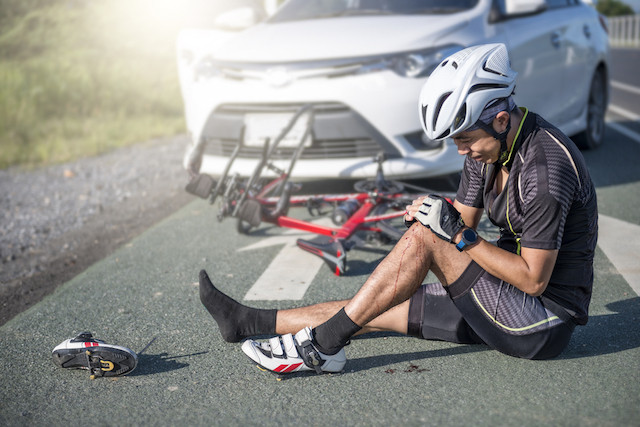Four out of ten injured cyclists were aged 35 to 54, one out of ten were aged under 18.
Rural vs urban
Some 65% of all accidents occurred in built-up or urban areas, however, it was on rural roads that all fatal accidents occurred.
Of the accidents recorded on urban cycle paths, just 11% resulted in a serious injury, while the proportion was 39% on rural cycle paths.
The report’s authors observed a trend in this direction over the past ten years. They wrote that in all locations, “accidents are nevertheless less serious during the last three years than over a ten-year period.”
Luxembourg City, which has spent the last years developing a cycle path network and today boasts a large chunk of cyclists, had among the lowest proportion of serious injuries from accidents, at just three in ten. The highest proportion of serious accidents was recorded in more rural districts, including Clervaux (67%), Redange (50%), Diekirch (45%) and Mersch (44%).
The most common accident circumstances involved a collision at a junction (40%). But incidents also occurred when being overtaken or changing lanes (17 incidents), colliding with pedestrians (7) and being struck by a car door (5). And it is not always motorists who are to blame. In four out of ten collisions, cyclists were found to have committed a traffic offence. Meanwhile, 3% were found to have consumed alcohol in excess of the legal limit.
Compared with other transport
Proportionally, there are more motorists than cyclists on Luxembourg’s roads and so it goes that there are more motorists injured or killed. In 2018 alone, 273 people suffered serious injury as a result of traffic accidents and 36 died, including three cyclists, nine motorcyclists and a quad rider.
How to make it safer for cyclists?
Luxembourg’s efforts to make roads safer for cyclists have included the creation of a 600-kilometre cycle path throughout the country. But not all networks are complete. “It’s true the government spends a lot of money and cyclists should use them but if you’re going to a certain place and there’s no cycle path leading there, you don’t have a choice. It doesn’t fit together yet,” Romain Gerson, a cyclist working in the capital, told Delano.
Construction of the tram network and developments in the Cloche d’Or have also undermined existing infrastructure, leading many would-be cyclists to leave the bike at home. Sports cyclist and cycle commuter Ina de Visser suggests the solution is in awareness raising and boosting the confidence of cyclists. “I hope to get some drivers on the bike every now and then, not always, just to experience what it’s like as a cyclist,” she told Delano.
